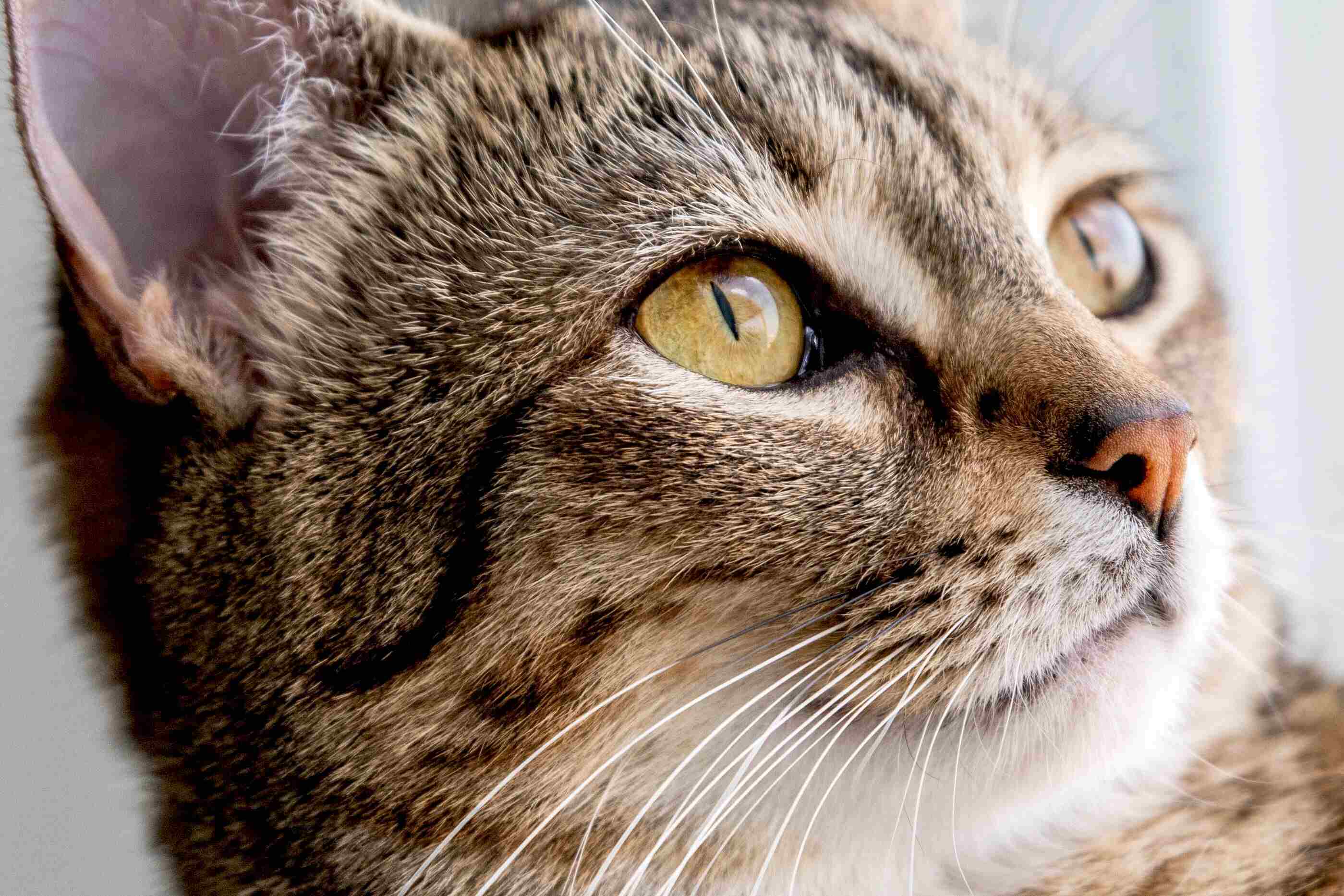
Ever wondered why cat eyes seem to glow in the dark? Cats have some of the most fascinating eyes in the animal kingdom. Their eyes are not just beautiful but also incredibly functional. Cat eyes have a unique structure that allows them to see in low light conditions, making them excellent night hunters. The secret lies in a special layer of cells called the tapetum lucidum, which reflects light back through the retina. This gives cats their signature glowing eyes and enhances their night vision. From their slit-shaped pupils to their wide range of colors, cat eyes are a marvel of nature. Let's dive into 37 intriguing facts about these mesmerizing feline features!
Key Takeaways:
- Cat eyes have a unique structure that gives them superior night vision and the ability to communicate emotions. They also provide important health indicators for cats.
- Cat eyes have historical, cultural, and scientific significance, and have made their mark in popular culture, symbolizing mystery and elegance.
The Unique Structure of Cat Eyes
Cats have some of the most fascinating eyes in the animal kingdom. Their eyes are not just beautiful; they are also incredibly functional.
- Cat eyes have a vertical slit-shaped pupil that allows them to control the amount of light entering their eyes more precisely than round pupils.
- The tapetum lucidum, a layer of cells behind the retina, reflects light that passes through the retina back into the eye, giving cats superior night vision.
- Cats have a third eyelid, called the nictitating membrane, which helps protect their eyes and keep them moist.
- Unlike humans, cats have more rod cells than cone cells in their retinas, making them excellent at detecting motion in low light but less adept at distinguishing colors.
- A cat's eyes can dilate to almost three times their normal size, allowing them to see better in the dark.
How Cats See the World
Understanding how cats perceive their environment can help us appreciate their behavior and needs.
- Cats are believed to be nearsighted, meaning they see better up close than at a distance.
- They have a wider field of view than humans, approximately 200 degrees compared to our 180 degrees.
- Cats can see some colors, but their color vision is limited compared to humans. They see blues and greens well but have difficulty distinguishing between reds and pinks.
- Their eyes are more sensitive to movement, which is why they are such effective hunters.
- Cats can see in one-sixth the light level required for human vision, thanks to their highly developed night vision.
The Role of Cat Eyes in Communication
Cats use their eyes to communicate with humans and other animals. Their eyes can convey a range of emotions and intentions.
- Slow blinking is a sign of trust and affection in cats. When a cat slowly blinks at you, it's often referred to as a "cat kiss."
- Dilated pupils can indicate excitement, fear, or aggression, depending on the context.
- A direct stare from a cat can be a sign of dominance or a challenge, especially between cats.
- Cats may squint or half-close their eyes when they feel relaxed and comfortable.
- Rapid blinking or avoiding eye contact can be a sign of submission or fear.
Health Indicators in Cat Eyes
A cat's eyes can provide important clues about their health. Regularly checking their eyes can help catch potential issues early.
- Clear, bright eyes are usually a sign of good health.
- Discharge or excessive tearing can indicate an infection or other health issue.
- Cloudiness in the eyes can be a sign of cataracts or other eye conditions.
- Redness or swelling around the eyes can indicate inflammation or infection.
- Changes in pupil size or shape can be a sign of neurological issues or other health problems.
Fun Facts About Cat Eyes
Beyond their functional and communicative roles, cat eyes have some fun and quirky aspects.
- Some cats have heterochromia, a condition where each eye is a different color.
- The largest eyes relative to body size among mammals belong to the tarsier, but cats come close.
- Cats' eyes can appear to glow in the dark due to the tapetum lucidum reflecting light.
- Kittens are born with blue eyes, which usually change color as they grow older.
- The Egyptian Mau is one of the few cat breeds with a natural "mascara" line around their eyes.
Historical and Cultural Significance of Cat Eyes
Cat eyes have held a special place in various cultures and histories around the world.
- In ancient Egypt, cats were revered, and their eyes were often depicted in art and jewelry.
- The "Eye of Ra" in Egyptian mythology is sometimes associated with the protective and powerful gaze of a cat.
- In Japanese folklore, the bakeneko is a cat with supernatural abilities, often depicted with glowing eyes.
- Some cultures believe that a cat's eyes can ward off evil spirits.
- Black cats with bright eyes are often featured in Halloween imagery and folklore.
Scientific Studies on Cat Eyes
Researchers have conducted numerous studies to understand the complexities of cat eyes and their vision.
- Studies have shown that cats' eyes are more sensitive to UV light than human eyes.
- Research indicates that cats' superior night vision is due to their high number of rod cells.
- Scientists have discovered that the tapetum lucidum in cats' eyes can reflect up to 130 times more light than human eyes.
- Experiments have demonstrated that cats can see some colors, but their vision is similar to a human with red-green color blindness.
- Studies on cat eye movement have helped researchers understand how they track and hunt prey.
Cat Eyes in Popular Culture
Cat eyes have made their mark in literature, movies, and art, often symbolizing mystery and elegance.
- The Cheshire Cat from "Alice in Wonderland" is famous for its enigmatic grin and glowing eyes.
- In the "Harry Potter" series, Professor McGonagall's Animagus form is a cat with distinctive, piercing eyes.
The Magic of Cat Eyes
Cat eyes are truly fascinating. From their vertical pupils that help them hunt to their ability to see in near darkness, these features make cats incredible predators. Their eyes can even change color as they age, adding to their mysterious allure.
Cats also have a third eyelid called the haw, which protects their eyes and keeps them moist. This unique feature is something most people don't know about. Plus, their eyes can reflect light, giving them that eerie glow in the dark.
Understanding these facts not only helps us appreciate our feline friends more but also highlights the amazing adaptations animals have developed. Next time you look into a cat's eyes, remember all the incredible things happening behind those mesmerizing orbs. Cats are more than just pets; they're marvels of nature.
Frequently Asked Questions
Was this page helpful?
Our commitment to delivering trustworthy and engaging content is at the heart of what we do. Each fact on our site is contributed by real users like you, bringing a wealth of diverse insights and information. To ensure the highest standards of accuracy and reliability, our dedicated editors meticulously review each submission. This process guarantees that the facts we share are not only fascinating but also credible. Trust in our commitment to quality and authenticity as you explore and learn with us.


